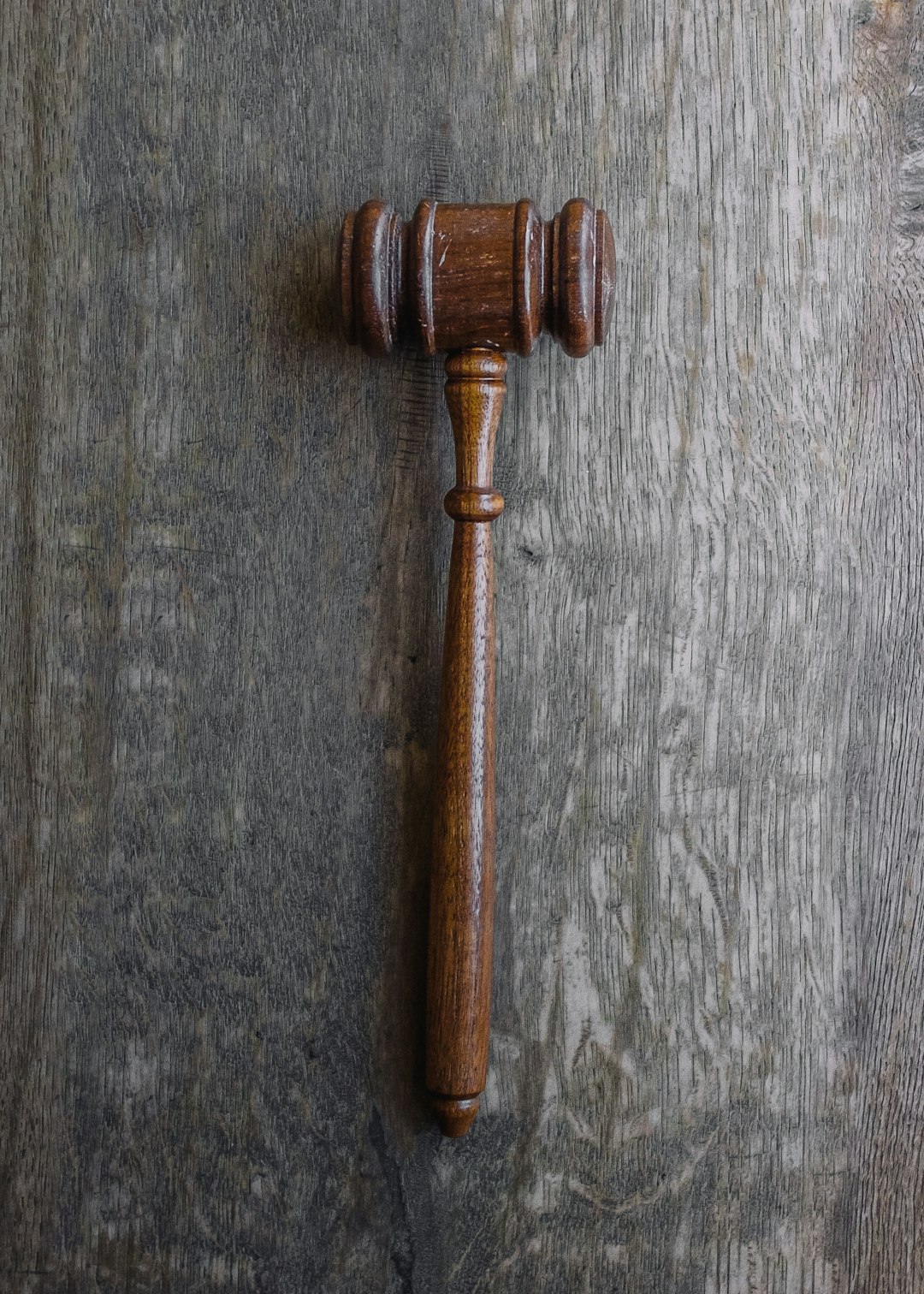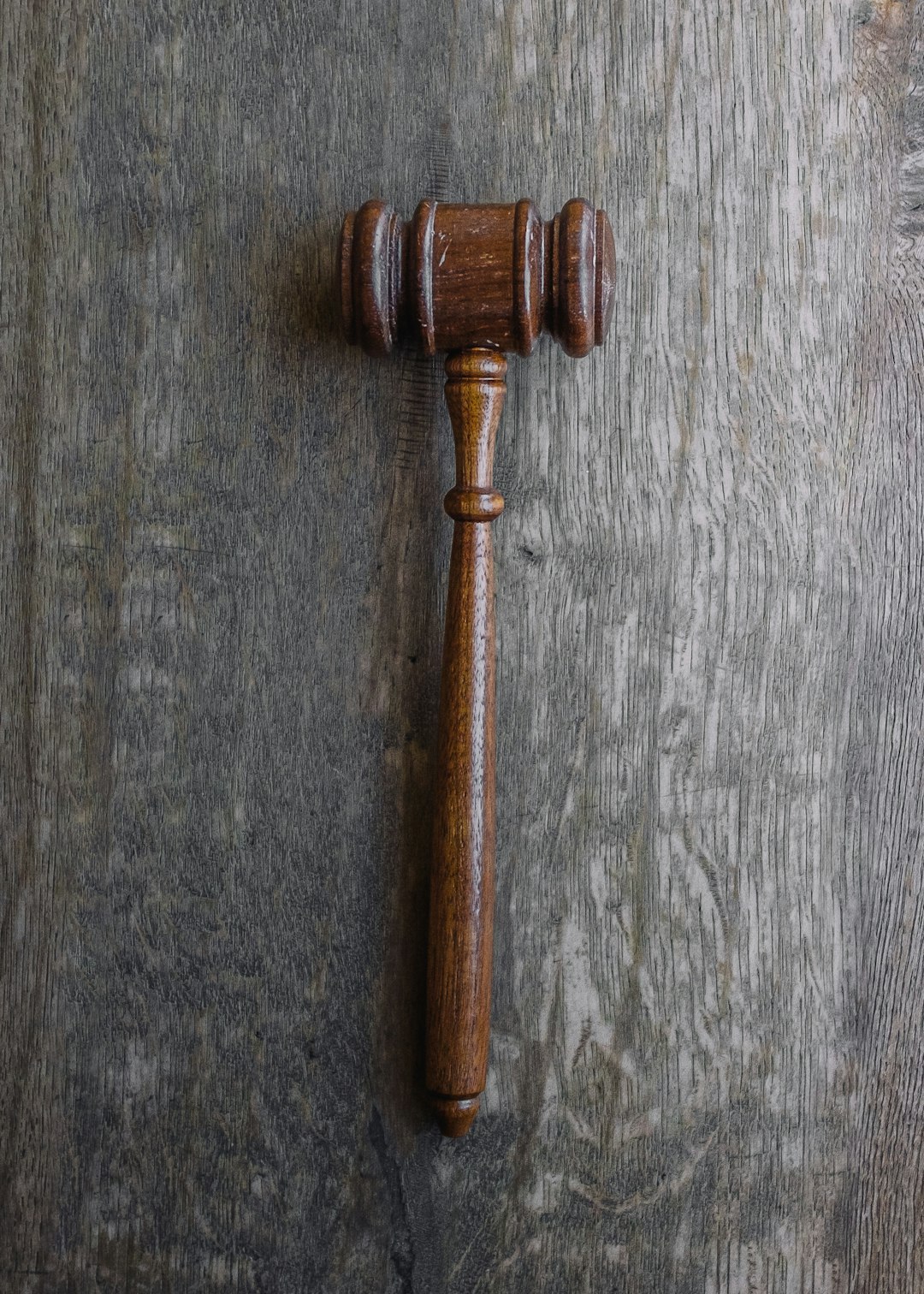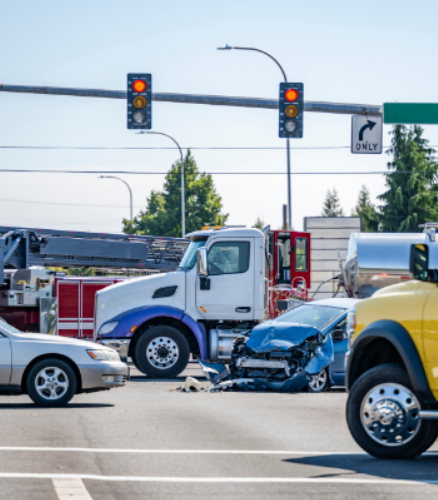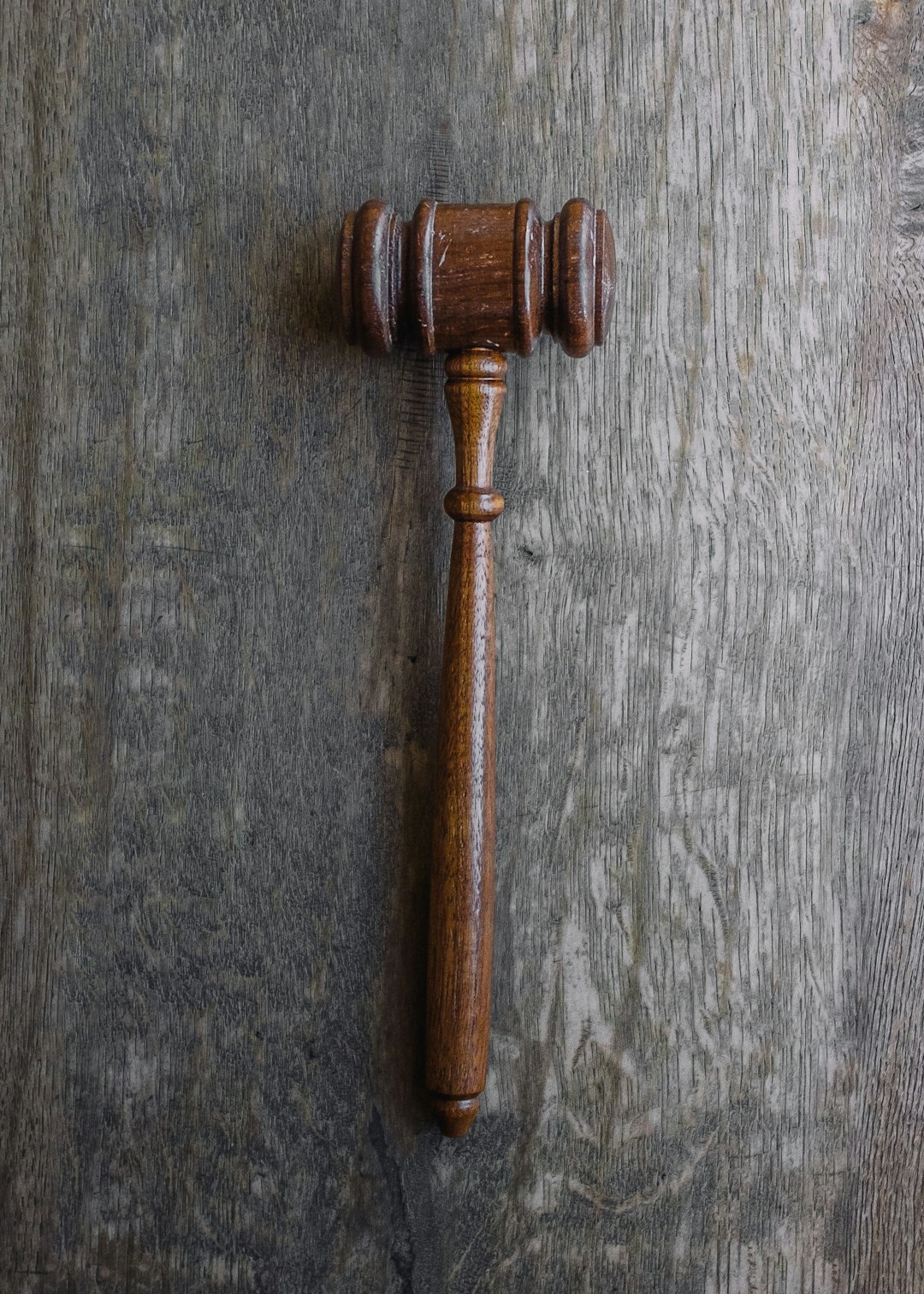

Determining liability in a Seattle truck accident involving multiple parties can be a complex and multifaceted process. The primary parties that could potentially be held responsible are the driver, the trucking company, and the manufacturer of the truck or its components. Each of these entities has distinct roles and responsibilities that can contribute to an accident in different ways.
Firstly, the truck driver is often scrutinized extensively when investigating an accident. Truck drivers have a responsibility to operate their vehicles safely and in accordance with traffic laws and regulations. truck accident lawyer Seattle . Factors such as fatigue, distraction, impairment due to drugs or alcohol, speeding, and negligence can all play significant roles in causing an accident. If it is determined that the driver's actions directly led to the incident, they may be held liable for any resulting damages.
However, liability does not always rest solely with the driver. The trucking company may also bear responsibility for several reasons. Companies are required to maintain stringent hiring practices, ensuring that their drivers are properly licensed, trained, and fit for duty. Additionally, they must comply with Federal Motor Carrier Safety Administration (FMCSA) regulations regarding hours of service to prevent driver fatigue. Failure in these areas can make a trucking company culpable if it is shown that their negligence contributed to the accident.
Moreover, maintenance and inspection duties fall under the purview of both drivers and trucking companies. Regular checks on vehicle conditions such as brakes, tires, lights, and other critical systems are mandatory. Any lapse in maintaining these standards can result in mechanical failures leading to accidents. In cases where poor maintenance is identified as a cause of an accident, liability may extend beyond just human error by implicating systemic issues within the company's operations.
The third potential party in this triad of accountability is the manufacturer of the truck or its parts. Defective equipment or design flaws can lead to catastrophic failures while on the road-examples include brake malfunctions or tire blowouts due to manufacturing defects. When such defects are found to be contributing factors in an accident, manufacturers might be held liable under product liability laws.
In some cases where multiple parties share blame-such as a fatigued driver operating a poorly maintained truck with defective parts-the complexity of determining individual liabilities increases significantly. Legal proceedings might involve detailed investigations by experts who analyze data from various sources including black box recordings from trucks, eyewitness testimonies, and physical evidence from crash sites.
Proving liability requires not only establishing fault but also demonstrating how each party's actions or omissions directly caused harm or damage. This intricate process often necessitates legal expertise to navigate through insurance claims and litigation effectively.
In conclusion, identifying liable parties in a Seattle truck accident involves examining multiple layers of potential accountability-from individual driver conduct to broader corporate responsibilities and possible manufacturing defects. Understanding these aspects is crucial for ensuring justice and appropriate compensation for those affected by such accidents.
The Role of Insurance Companies in Determining Liability for a Seattle Truck Accident Involving Multiple Parties
In the bustling city of Seattle, truck accidents are an unfortunate reality that can involve multiple parties, including drivers, trucking companies, and even third-party contractors. When such accidents occur, determining liability becomes a complex process requiring careful scrutiny of various factors. At the heart of this intricate equation are insurance companies, which play a pivotal role in establishing accountability and ensuring that victims receive appropriate compensation.
Insurance companies are fundamentally responsible for investigating the circumstances surrounding an accident. They deploy claims adjusters and investigators to gather evidence, interview witnesses, review police reports, and analyze accident scene reconstructions. This thorough investigation helps determine the sequence of events leading to the collision, thereby identifying which parties may be at fault.
One crucial aspect where insurance companies exert significant influence is through their interpretation of policy terms and coverage limits. Different parties involved in a multi-vehicle truck accident often have distinct insurance policies with varying levels of coverage. For instance, a truck driver might have personal auto insurance while the trucking company could possess commercial liability insurance. Additionally, cargo owners or manufacturers might also have separate policies if any product defects contributed to the incident.
By scrutinizing these policies, insurance companies assess which coverages apply to specific damages or injuries sustained during the accident. They examine exclusions and limitations within each policy to ascertain whether particular claims can be honored or denied. This expertise is vital because it directly impacts how much compensation victims can claim from each liable party.
Furthermore, insurance companies engage in negotiations between involved parties to facilitate settlements without resorting to prolonged litigation. Given their vast experience in handling such cases, insurers can often expedite resolutions by proposing fair compensatory amounts based on established precedents and actuarial data. These negotiations help avoid lengthy court battles that could otherwise delay justice for those affected by the accident.
However, it's worth noting that while insurance companies aim to resolve claims efficiently, they are also profit-driven entities seeking to minimize payouts whenever possible. As such, they may employ tactics like disputing liability or undervaluing claims in order to protect their financial interests. It is therefore essential for injured parties to seek legal counsel who can advocate on their behalf and ensure they receive fair treatment from insurers.
In multi-party truck accidents occurring in Seattle or elsewhere, subrogation comes into play-a process where an insurer that has paid out a claim seeks reimbursement from other liable insurers or entities. This further complicates liability determination as it involves cross-claims between different insurance providers aiming to recover their expenditures.
Ultimately, while determining liability in a multi-party Seattle truck accident is undeniably complex due to multiple stakeholders and overlapping coverages; insurance companies serve as key players navigating this labyrinthine process. Their investigative capabilities help establish fault lines clearly; their negotiation skills enable swift settlements; but equally important is vigilant oversight by legal professionals ensuring equitable outcomes for all affected individuals.
In conclusion ,the role played by insurance companies cannot be understated when deciphering liability amidst multifaceted truck accidents .Their involvement shapes both immediate responses post-accident ,and long-term financial recuperations making them indispensable yet scrutinized participants within this critical arena .
When navigating the aftermath of a truck accident in Seattle, it's crucial to understand the intricacies of finalizing settlements and deciding whether to accept an offer or pursue further legal action.. This decision can significantly impact the compensation you ultimately receive, and having a seasoned Seattle truck accident lawyer by your side can make all the difference. Truck accidents are often more complex than typical car accidents due to factors such as the severity of injuries, higher potential for property damage, and multiple parties that could be held liable.

Posted by on 2024-09-16
Choosing the right truck accident lawyer in Seattle can be a daunting task, especially when you're dealing with the aftermath of a traumatic event.. The initial consultation is your opportunity to gauge whether a lawyer is the right fit for you.

Posted by on 2024-09-16
Navigating the aftermath of a truck accident can be an overwhelming and complex ordeal.. Amidst medical treatments, emotional turmoil, and potential financial instability, one pivotal aspect stands out: maximizing compensation and securing a fair final settlement.

Posted by on 2024-09-16
When it comes to choosing the best Seattle truck accident lawyer, making the final decision can feel like navigating a labyrinth.. The attorney you select will play a crucial role in your pursuit of justice and compensation, so it's vital to ensure you're making an informed choice.

Posted by on 2024-09-16
Truck accidents are a grim reality on Seattle's bustling roadways.. The sheer size and weight of these vehicles mean that collisions often result in severe injuries, extensive property damage, and tragically, sometimes fatalities.

Posted by on 2024-09-16
The complex landscape of liability in a Seattle truck accident involving multiple parties can be significantly influenced by both federal and state regulations. Understanding who is liable in such scenarios requires an examination of the multifaceted legal framework that governs commercial trucking, as well as an analysis of how these regulations interact with local laws.
Federal regulations primarily come from the Federal Motor Carrier Safety Administration (FMCSA), which oversees interstate commercial trucking activities. The FMCSA sets forth stringent guidelines on aspects such as driver qualifications, hours of service, vehicle maintenance, and cargo securement. These regulations are designed to ensure safety on the highways and prevent accidents. When a truck accident occurs, compliance or non-compliance with these federal standards is often scrutinized to determine liability. For instance, if a truck driver violated hours-of-service rules by driving longer than legally permitted without rest and this led to fatigue-related errors causing the accident, both the driver and possibly the trucking company could be held liable under federal law.
State laws in Washington add another layer of complexity. Washington State has its own set of traffic laws and commercial vehicle regulations that work alongside federal rules to regulate intrastate commerce. The state's Department of Transportation (WSDOT) enforces these laws, which may include specific requirements for vehicle inspections, weight limits on roads, and special permits for oversized loads. In cases where a truck accident occurs within Seattle's jurisdiction, local traffic ordinances might also play a role in determining liability.
The interplay between federal and state regulations often means that multiple parties can be held accountable in varying degrees for their roles in a truck accident. For example, liability could extend beyond the truck driver to include the trucking company if it is found that they failed to enforce proper compliance with safety standards or neglected adequate vehicle maintenance protocols mandated by either federal or state law.
Additionally, other parties may be implicated depending on the circumstances surrounding the crash. If faulty equipment contributed to the accident-such as brake failure due to manufacturing defects-the equipment manufacturer might also share responsibility under product liability principles governed by state consumer protection laws. Similarly, if improper loading practices were at fault, shippers or cargo handlers could find themselves entangled in liability claims.
Moreover, Seattle's bustling urban environment introduces unique challenges such as dense traffic conditions and diverse road users-from pedestrians to cyclists-that can further complicate liability assessments. Local municipalities may have specific ordinances that impact how accidents are evaluated; for instance, particular rules about right-of-way at intersections could influence determinations of fault.
In conclusion, determining who is liable in a Seattle truck accident involving multiple parties necessitates a careful consideration of both federal and state regulations. Each layer of governance plays a critical role in shaping responsibilities and obligations-whether it's adherence to FMCSA guidelines or compliance with WSDOT directives-and collectively they form an intricate legal tapestry that must be navigated judiciously to ascertain accountability accurately. The interdependence between various regulatory frameworks ensures that all potential contributing factors are examined thoroughly when assessing liability in such complex incidents.

In the bustling city of Seattle, truck accidents involving multiple parties can present a complex web of liability. Establishing fault in such incidents requires meticulous gathering of evidence. The intricate nature of these accidents means that determining who is liable isn't straightforward; rather, it demands a thorough investigation and an understanding of various contributing factors.
Firstly, eyewitness accounts play a pivotal role in piecing together the sequence of events leading up to the accident. Statements from drivers, passengers, and bystanders can provide invaluable insights into what transpired. These testimonies help establish a timeline and may reveal critical details about each party's actions or negligence.
Additionally, physical evidence from the scene must be meticulously documented. Photographs and videos capturing vehicle positions, skid marks, traffic signals, and road conditions are essential for reconstructing the accident. This visual evidence serves as an objective record that can corroborate or challenge witness statements.
Moreover, obtaining data from electronic logging devices (ELDs) installed in commercial trucks is crucial. ELDs record information about the truck's speed, braking patterns, and hours of service before the crash. This data can indicate whether fatigue or mechanical issues were factors in the accident.
Accident reconstruction experts often become key players in multi-party truck accidents. These professionals analyze all available evidence to recreate the incident scientifically. Their expertise helps clarify how each vehicle interacted with one another and identifies potential violations of traffic laws or safety regulations.
Another layer of complexity arises when considering the roles of different parties involved-drivers, trucking companies, cargo loaders, and even manufacturers. Each entity may bear varying degrees of responsibility depending on their adherence to safety protocols and regulatory compliance. For instance, if improper loading caused cargo to shift unexpectedly leading to loss of control, then those responsible for loading could be held liable.
Furthermore, maintenance records are scrutinized to determine if mechanical failure contributed to the accident. If poor maintenance practices by trucking companies are uncovered-such as neglected brake repairs or tire replacements-they could be deemed negligent.
It's also imperative to review police reports generated at the scene. Law enforcement officers' observations provide an official account that supports establishing fault lines among parties involved.
Finally, legal standards specific to Washington state laws must be applied when adjudicating liability in Seattle truck accidents involving multiple parties. Comparative negligence principles allow for assigning percentages of fault to different parties based on their contribution to causing the accident.
In conclusion, gathering evidence to establish fault in multi-party truck accidents within Seattle requires comprehensive investigation encompassing eyewitness testimony; physical documentation; electronic data analysis; expert reconstruction; scrutiny over involved entities' roles; maintenance record checks; police report evaluations; and application of state-specific legal frameworks. Only through this exhaustive process can accurate determinations regarding liability be made ensuring justice is served appropriately for all affected individuals.
When discussing the issue of liability in a Seattle truck accident involving multiple parties, it is imperative to delve into legal precedents and case studies that provide a framework for understanding how responsibility is determined. Truck accidents often present complex scenarios where fault may not be immediately apparent, requiring a meticulous examination of various factors and actors involved.
Seattle, much like other major urban centers, has witnessed its fair share of truck accidents. The legal landscape here is shaped significantly by both state laws and federal regulations governing commercial trucking. One notable case that helps illustrate how liability can be parsed out among multiple parties is the 2017 case of Johnson v. XYZ Trucking Co. In this case, a multi-vehicle collision on I-5 near downtown Seattle resulted in serious injuries and significant property damage.
The crux of the matter in Johnson v. XYZ Trucking Co. was determining who bore the primary responsibility for the accident: the truck driver, the trucking company, or other third parties such as vehicle manufacturers or maintenance providers. The court's decision underscored several critical points relevant to such cases.
Firstly, driver negligence was scrutinized under Washington state law, which mandates that all drivers operate their vehicles with reasonable care. Evidence presented showed that the truck driver had violated hours-of-service regulations designed to prevent fatigue-related accidents. This violation established a clear line of negligence directly attributable to the driver.
Secondly, vicarious liability principles were applied to hold XYZ Trucking Co accountable for their employee's actions during the course of employment. The company's failure to enforce compliance with federal safety standards exposed them to substantial liability alongside their driver.
Furthermore, an investigation revealed that faulty brakes contributed significantly to the severity of the accident. This discovery brought another layer into focus-product liability claims against the brake manufacturer and potential negligence by those responsible for vehicle maintenance. Herein lies another key lesson from Seattle's legal precedents: when mechanical failures play a role in an accident, courts often look beyond human error to assess whether manufacturing defects or improper maintenance were contributing factors.
In this particular case study, settlements were reached through intricate negotiations considering comparative fault principles-which allocate damages proportionately based on each party's degree of responsibility. This approach aligns with Washington's contributory negligence statute (RCW 4.22), enabling injured plaintiffs like Johnson to recover compensation even if they were partially at fault for their own injuries.
A similar complexity can be observed in another prominent case: Smith v. ABC Logistics, where overlapping allegations against multiple parties led to extensive litigation. Here again, careful dissection of evidence regarding driver conduct, employer practices related to hiring and training protocols, as well as third-party contractor accountability played pivotal roles in determining how damages would be apportioned.
These examples highlight essential considerations for determining liability in multi-party truck accidents within Seattle's jurisdiction:
1) Driver Conduct: Examining whether drivers adhered strictly to traffic laws and safety regulations.
2) Employer Responsibility: Assessing companies' enforcement of compliance with federal/state regulations and their oversight mechanisms.
3) Third-party Involvement: Investigating potential faults in vehicle components or lapses by contractors providing maintenance services.
In conclusion, Seattle's approach towards adjudicating truck accident liabilities involves a comprehensive assessment encompassing individual actions and systemic issues across various stakeholders involved within commercial transport operations. Legal precedents underscore that thorough investigations backed by expert testimonies are crucial for unraveling these multifaceted incidents-ultimately ensuring just outcomes aligned with principles of fairness and accountability enshrined within our judicial system
Experiencing a multi-party truck accident in Seattle can be an overwhelming and traumatic event. Such incidents often involve multiple vehicles, extensive damages, and a complex web of liability. In the aftermath, victims may feel lost and unsure of their next steps. Understanding the crucial actions to take can significantly impact their recovery process-both physically and legally.
Firstly, immediate medical attention is paramount. Regardless of how minor injuries might seem, it's essential to seek medical evaluation promptly. Some injuries may not manifest symptoms immediately but could have long-term consequences if left untreated. Additionally, having documented medical records from the outset is vital when pursuing any claims for compensation later on.
Next, it's critical to report the accident to law enforcement. In Seattle, like elsewhere, police reports play a significant role in determining fault and liability. These reports provide an official account of the incident and are invaluable when dealing with insurance companies or legal proceedings.
Gathering evidence at the scene is another step that cannot be overstated. If it's safe to do so, victims should take photographs or videos of the accident site, vehicle damages, skid marks on the road, traffic signals, and any other relevant details. Collecting contact information from witnesses is also beneficial as their testimonies could support your case.
Notifying your insurance company about the accident should follow soon after addressing immediate concerns. However, while providing necessary information about the incident to your insurer is important, it's equally crucial to be cautious about making detailed statements or accepting settlements prematurely.
Given that multi-party accidents entail intricate liability issues involving various parties such as truck drivers, trucking companies, vehicle manufacturers, and possibly even government entities responsible for road maintenance-consulting with a specialized personal injury attorney becomes indispensable. An experienced lawyer can help navigate through these complexities by evaluating all potential sources of liability and advising on the best course of action.
In addition to legal counsel, victims should maintain a record of all expenses related to the accident-including medical bills, repair costs for vehicles or property damage, lost wages due to time off work for recovery or attending court sessions-and retain copies of all correspondence with insurance companies or other involved parties.
Understanding who is liable in a Seattle truck accident involving multiple parties requires meticulous examination of various factors such as driver negligence (e.g., speeding or distracted driving), mechanical failures (e.g., brake malfunctions), improper loading practices leading to cargo spills or imbalances affecting vehicle control-each aspect pointing toward different liable entities ranging from drivers themselves to employers responsible for maintenance oversight.
Lastly but importantly-mental health should not be overlooked amidst these proceedings; seeking counseling or support groups can provide emotional relief during this stressful period.
In conclusion-from obtaining urgent medical care and documenting evidence meticulously to consulting adept legal professionals-the steps taken post-accident are crucial in safeguarding one's rights and ensuring fair compensation following a multi-party truck collision in Seattle. Although daunting initially-with proper guidance-victims can find solace knowing they're taking proactive measures toward reclaiming stability in their lives once more.